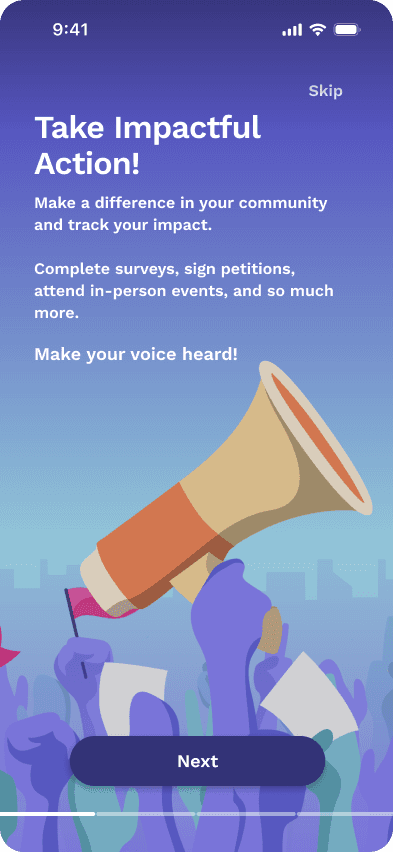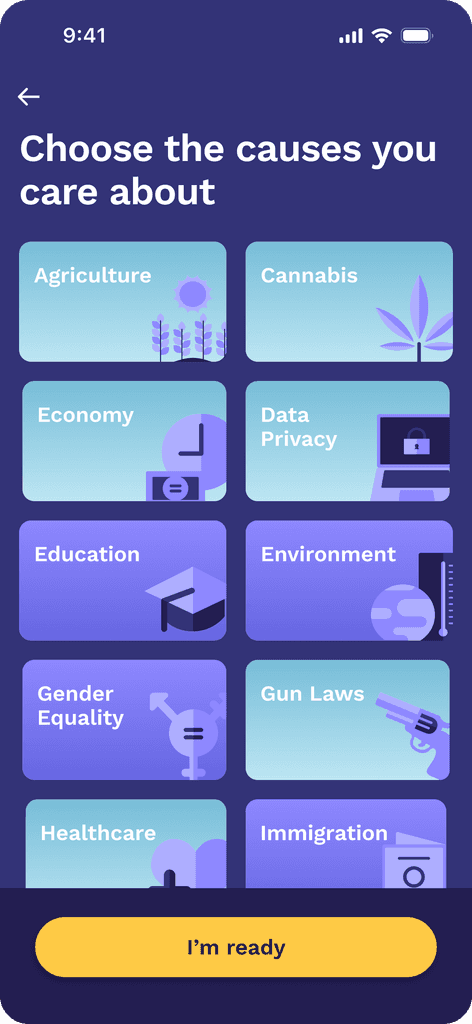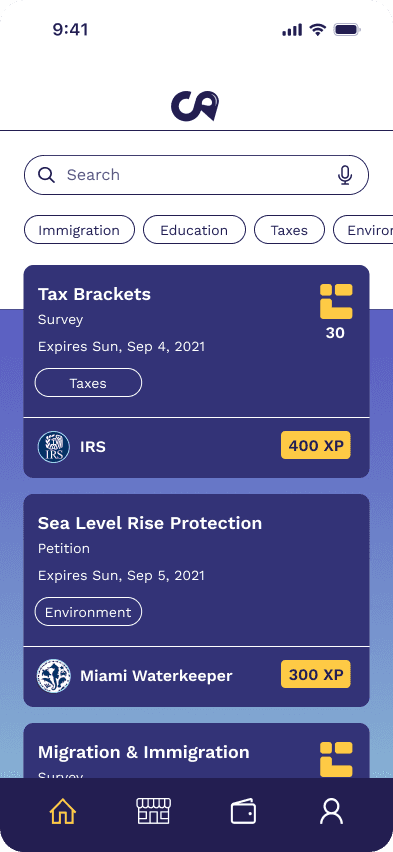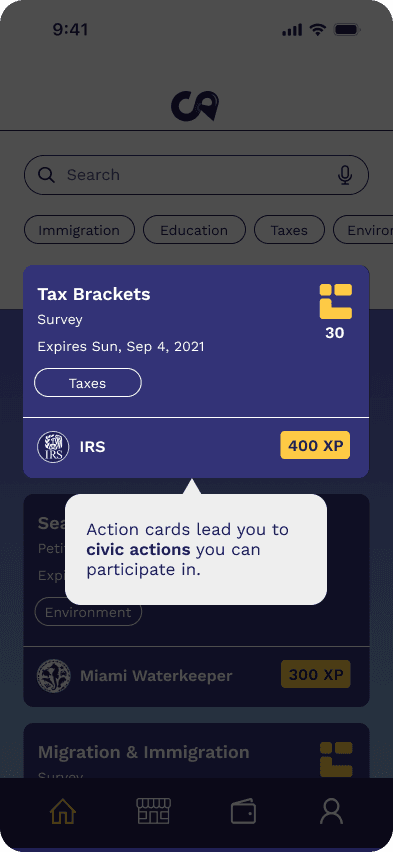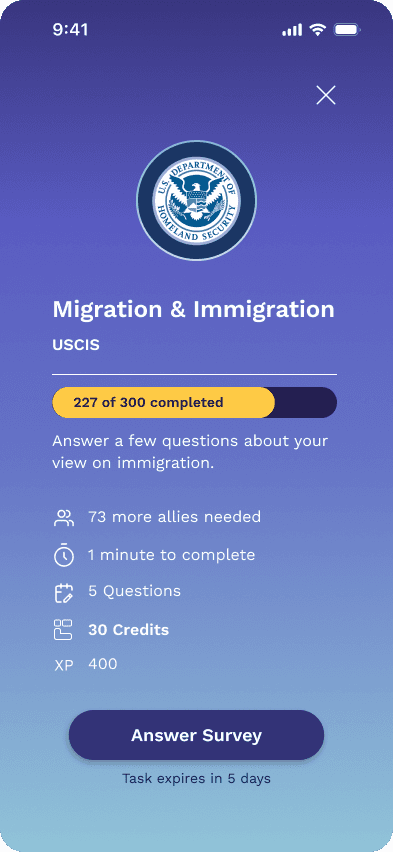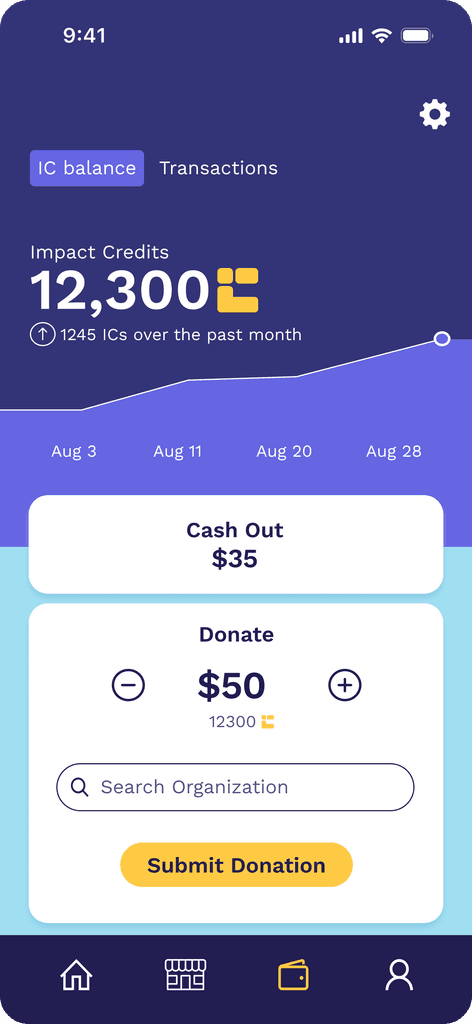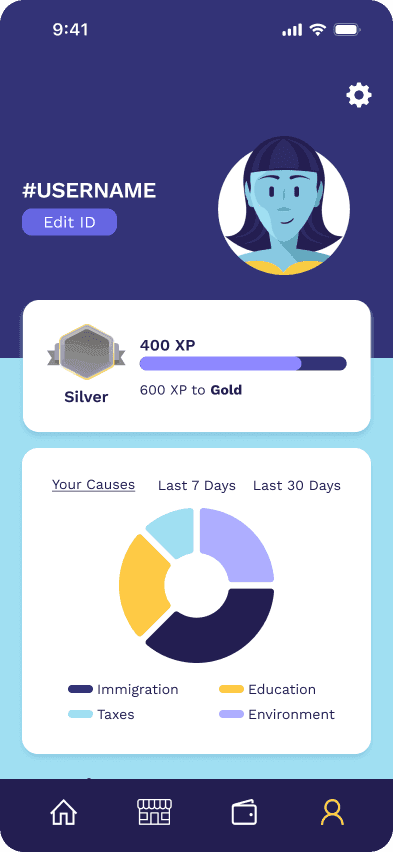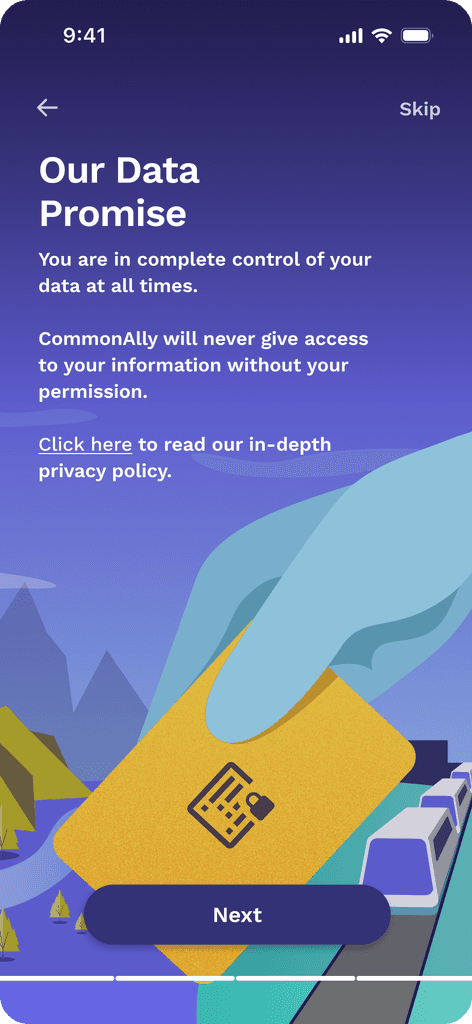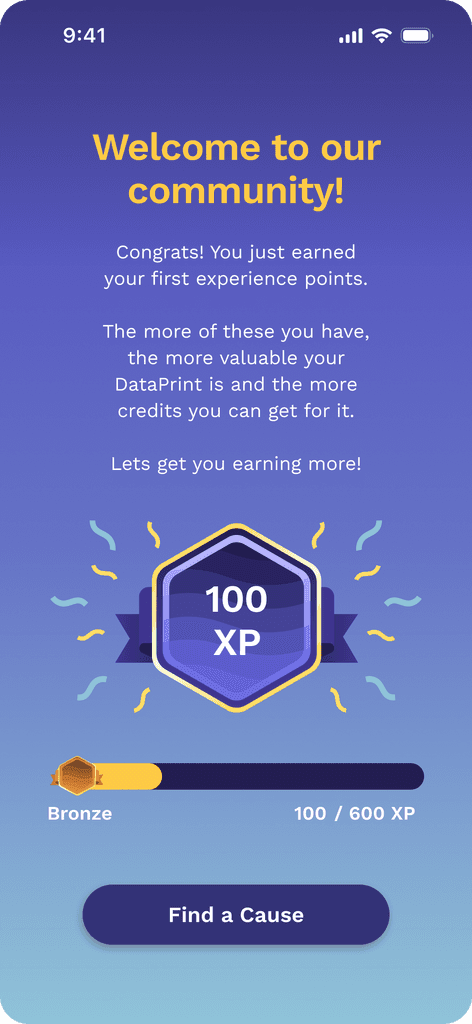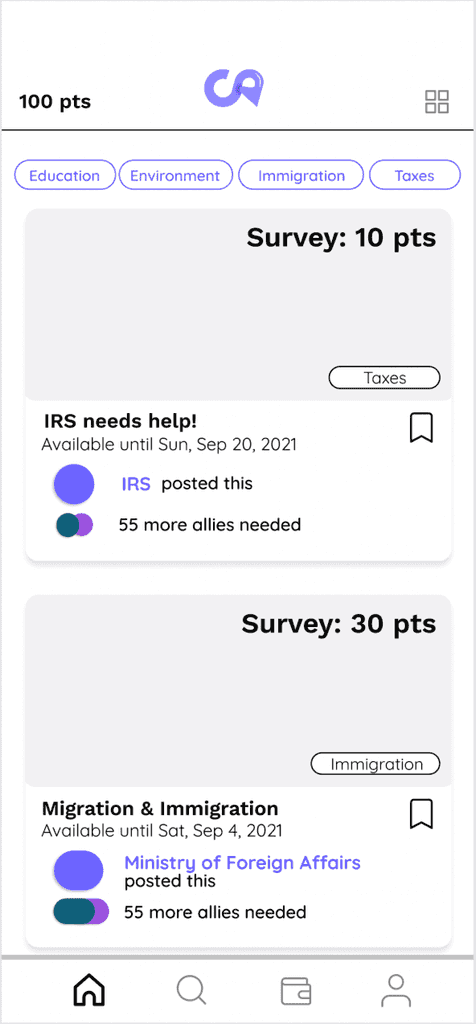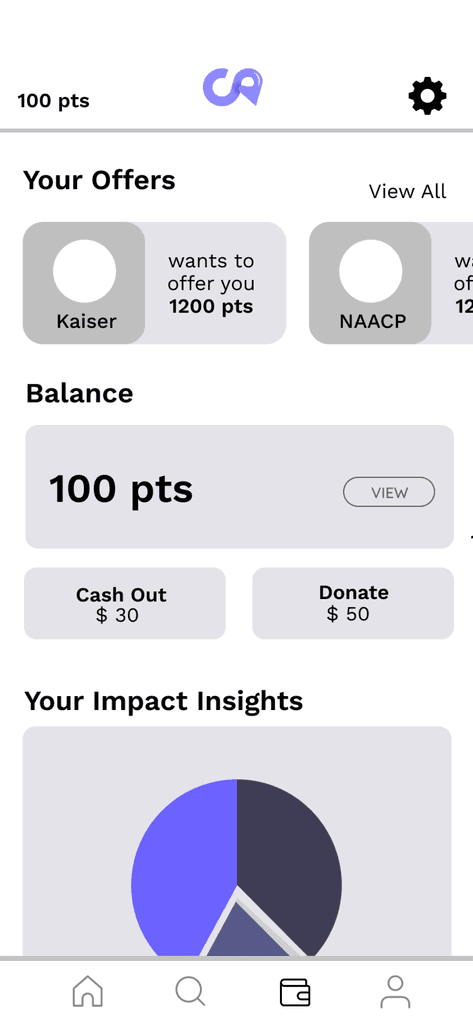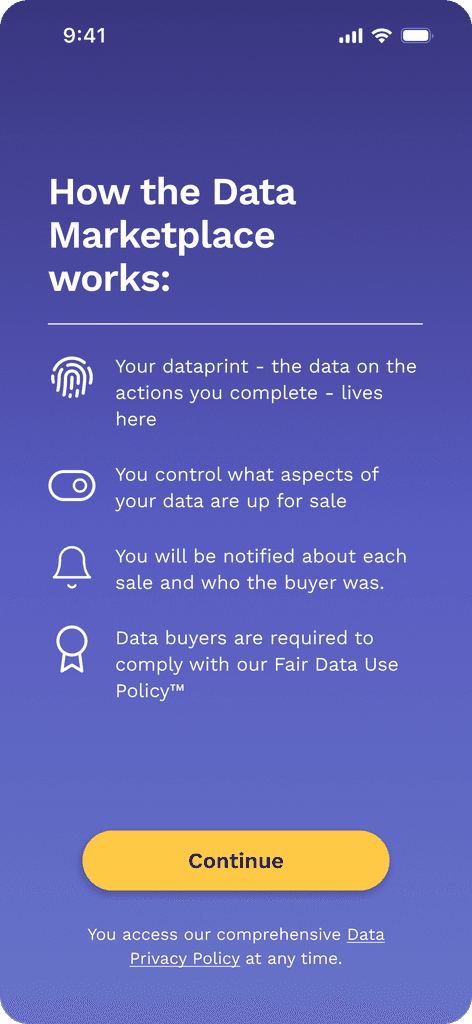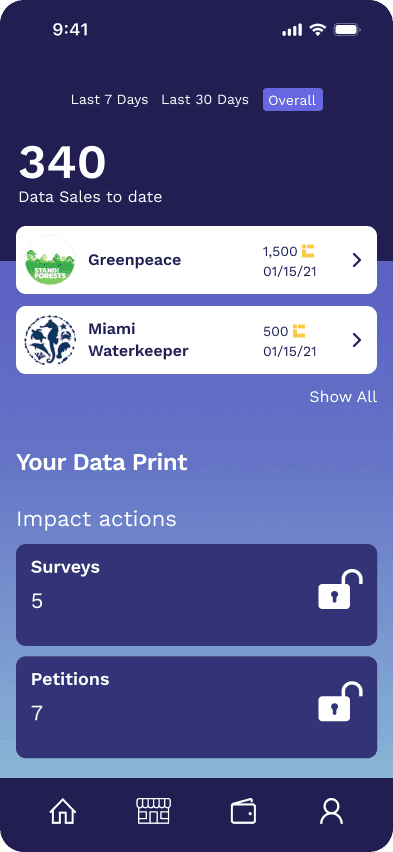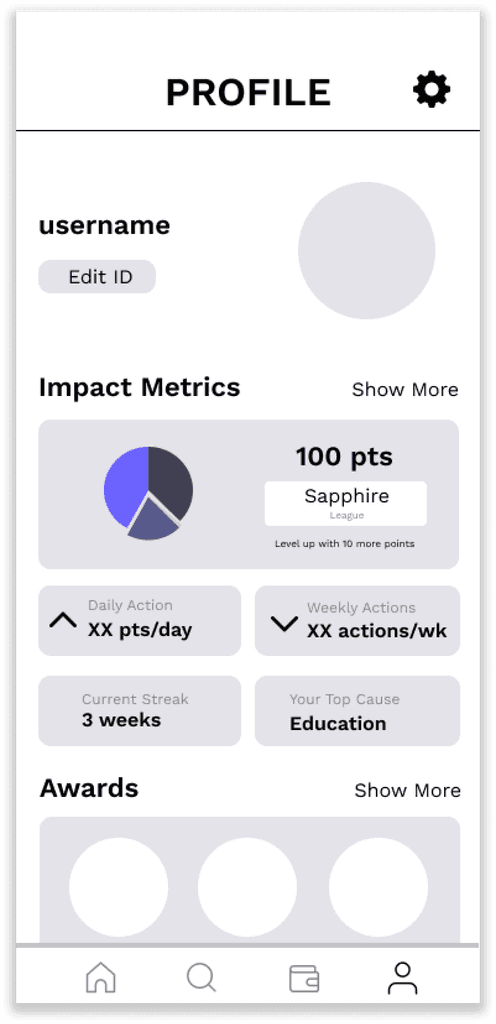mobile app | design lead
ROLE
Lead Product Designer
tools
Figma, Notion, Loom, ClickUp
duration
3 weeks
Problem
Selling your own data was a new concept for users. CommonAlly needed to achieve trust and understanding in their marketplace for it to work.
They needed to validate that users would trust institutions with this data, and understand how to achieve continuous engagement.
Response
Various iterations leading to an MVP that provided users with information and controls on how their data could be accessed, and a gamified experience to promote engagement.
Understand
Research to deepen understanding of user needs. Map the systems, players & workflows, and align with stakeholders about problem definition.
Conceptualize
Early explorations that get shared quickly to establish direction: sketches, user flows, and information architecture. These evolve into higher fidelity workflows.
Evaluate
Share & measure - repeatedly. Through usability tests, and ensuring measurement plans are in place once the feature ships. Also, ensuring all stakeholders are trained on it.
We interviewed 10 candidates that fit the target audience CommonAlly was focused on understanding their sentiments on data privacy and brokering their data, as well as the kinds of digital experiences that kept them coming back for more.
Behaviors
-> Motivated by point systems
-> Feel accomplished when the impact of their actions can be measured
-> Consume short + highly visual content
Pain points
-> Concerned about what aspect of their data is being collected and by whom
-> Want to know how their data is being user after they sell it.
-> Want control of who gets their data.
I had to balance between users wanting to know about data usage and privacy, and also not wanting too much text, and having a visually engaging, bite-sized experience.
I implemented a tiered approach, where the higher level was short, stylized, just the necessary information, followed by further detail once some engagement was initiated, and optional opportunities to drill in for those that were most curious.

I knew we needed to make the content digestible, familiar, clickable and easy to interact with. We implemented the following:
Opted for a feed experience, which tested well with users.
Simplified the information architecture of the action cards after receiving confused feedback from users.
Implemented an introduction screen that summarizes key properties about the impact action before user begins.

We knew that:
Users needed to cash out their impact credits.
Users needed to be able to see offers on their DataPrint (their data profile available for sale on the data marketplace).
Users needed to be able to track how many XPs
Users wanted to see where their impact was going.
I initially designed for all of these to be held within the wallet, but quickly learned through testing that it was too much, and users didn't understand it.
I realized each needed its own space, and the wallet needed to be only for impact credit transactions.

During our engagement, the data marketplace changed from user-managed offers to sales happening in the background.
Users reacted negatively to this change. I eased some of that reaction by including an intro screen to the data marketplace that spoke more of our privacy policy worked, and by giving them full control through a toggle UI, of which aspects of their data they wished to make available.
We also agreed to include in the roadmap a way to blacklist certain organizations from buying their data.

While early iterations of the user profile tested very well. Things like the Trends feature were taken out of scope for the MVP iteration to simplify things for the engineering team.
This resulted in more focus on another loved feature, which is seeing where the user's impact is going.
Awards also got deprioritized as the whole award system needed to be created.

We did a final round of usability tests + research before concretizing what would be part of the MVP.
Homepage
-> Users had a better understanding of the cards. "I instantly know what's going on here. There is no useless information", was one example feedback.
XPs & Impact Credits
-> When we made points into XPs, users immediately made the connection to how they worked in video games and understood the difference between XP and impact credits.
Tracking of data
-> Users continued to ask to be able to know how their data is used post-sale. This has a very hard feasibility, for which we found a good compromise to be adding black-listing organizations to the product roadmap.
